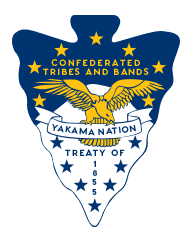The area that is now the Hudson Biological Reserve was originally managed by the Palouis (Palouse) tribe, and was an important gathering place of Indigenous peoples from many different tribes (Scheuerman and Finley
2008, 13, Frey 2001, 27, Sprague 1998, 354). The tribes relied mostly on fishing and gathering native plants for food, medicine, and cultural practice. The diverse plant communities native to the Palouse Prairie were actively managed and depended on by Indigenous peoples, thus the biodiversity native to the Palouse Prairie is deeply tied to the cultural and spiritual wellbeing of Indigenous communities. Loss of native biodiversity destabilizes ecosystems but also brings a loss of Indigenous cultural prosperity. For more information about the cultural and ethnobotanical value of the Palouse Prairie, see Dr. Cleve Davis’s publication “The Palouse Prairie: A Vanishing Indigenous People’s Garden” (Download pdf). Also, see the Tribal Ceded Areas Map (USFWS) map.
Today, Washington is home to 29 federally recognized tribes, each with their own governments. There are approximately 140,714 Native citizens in Washington state. For more information, visit the Washington Tribes Website. Below is a approximate map of historic Indigenous territories at one time pre-colonization, while the next map shows the current extent of reservations throughout Washington State.


Map of current tribal territories from Washingtontribes.org
European settlers encroached on native territories in Washington and throughout North America with violence and bloodshed in a struggle to remove Native people from their homelands (Sprague 1998, 352, Hunn 1990, 34-36, Scheuerman and Finley 2008, 27). In the Columbia plateau, the Palouis (Palouse) tribe native to the Palouse Prairie joined the Confederated Tribes and Bands of the Yakama Nation following the Treaty of 1855. The Yakama Nation includes the tribes and bands Yakama Palouis, Pisquouse, Wenatchsahpam, Klikatat, Klingquit, Kow-was-say-ee, Li-was, Skin-pha, Wish-ham, Shyiks, Ocehchotes, Ka-milt-pha, and Se-ap-Cat. In surrounding areas of Washington, European colonizers also forced surviving Native peoples onto the Nimiipuu (Nez Perce), Spokane, and Coeur d’Alene reservations. For more information about current tribal activities and governments, please follow the links below:
Confederated Tribes and Bands of the Yakama Nation Website

From their website: “Generations before the advance of the modern world, the lands of the Yakama extended in all directions along the Cascade Mountain Range to the Columbia River and beyond. We considered it land given in trust by the Creator for the use of the living and a heritage to be held and protected for unborn generations.”

From their website: ‘OUR VISION: “To achieve true sovereignty by attaining self-sufficiency. We will preserve and enhance our traditional values by living and teaching the inherent principles of respect, honor, and integrity as embodied in our language and life-ways. We will develop strong leadership through education, accountability, experience, and positive reinforcement.”‘
Nimiipuu (Nez Perce) Tribe Website

From their website: ‘WHO WE ARE: “The Nimiipuu people have always resided and subsisted on lands that included the present-day Nez Perce Reservation in north-central Idaho. Today, the Nez Perce Tribe is a federally recognized tribal nation with more than 3,500 citizens.”‘

From their website: ‘The modern Coeur d’Alene Tribe is the sum of uncounted centuries of untold generations. In the tribe’s own ancient language, it is called Schitsu’umsh, meaning “Those who were found here” or “The discovered people”. In this remains a land abundant in beauty and resources, a legacy of leadership, and a lineage that continues from the time immemorial. The Coeur d’Alenes are who they always were and who they will always be.’
_________________________________________________________________________________________________________________________________

(From R. Daubenmire, 1970. Steppe vegetation of Washington. Technical Bulletin 62. Pullman, WA: Washington State University, College of Agriculture, Washington Agricultural Experiment Station.)
_________________________________________________________________________________________________________________________________
